Researchers from the Nanjing Institute of Geology and Palaeontology of the Chinese Academy of Sciences and Columbia University, along with their collaborators, have analyzed sediments from the terrestrial Sangonghe Formation (Late Early Jurassic) in China’s Junggar Basin, revealing information both on Solar System chaos and the global carbon cycle. Their findings were published in the Proceedings of the National Academy of Sciences (PNAS).
The team conducted a multidisciplinary study of the Junggar Basin’s well-preserved lake sediments, combining astrochronostratigraphy, sedimentology, geochemistry, and palynology. Their analyses uncovered a shifting long-term rhythm in the orbits of Mars and Earth—known as the Mars–Earth grand eccentricity cycle—which governs how elliptical Earth’s orbit becomes over multi-million-year timescales. These orbital changes affect how much sunlight Earth receives and, in turn, influence climate and the global carbon cycle.
The study identified a previously unrecognized 1.6-million-year cycle in the carbon isotope record, distinct from the current 2.4-million-year grand eccentricity cycle. This variation provides concrete geological evidence of Solar System chaos—the idea that gravitational interactions among planets can lead to unpredictable orbital shifts over deep time. The findings extend our understanding of planetary behavior beyond the 60-million-year limit of modern orbital simulations.
In parallel, the study sheds light on the Earth’s carbon cycle response during a major climate event: the Jenkyns Event, a global warming episode approximately 183 million years ago. The researchers linked this event to the 1.6-million-year orbital cycle and found that carbon isotope signals recorded in the shallow-lake environment of the Junggar Basin likely reflect changes in atmospheric CO₂ composition driven by orbital dynamics. Unlike marine and deep lake settings, where carbon fluctuations appear amplified, the Junggar Basin may preserve a more representative signal of the global carbon system.
This research demonstrates how ancient sediments can serve as a window into both planetary dynamics and Earth system processes, helping scientists constrain the evolution of the Solar System and better understand how orbital variations can drive climate and carbon cycle changes on Earth.
By bridging insights from planetary science and paleoclimatology, the study contributes to refining astronomical models, validating gravitational theories, and improving our knowledge of Earth’s long-term climate sensitivity.
Reference: Fang Yanan, Olsen P. E., Sha Jingeng, Whiteside J. H., Chengguo Guan, Ikeda M., Li Sha, Zheng Daran, Zhang Haichun, Wang Bo, 2025. Jurassic constrains on the chaotic Mars-Earth eccentricity cycle linked to the volcanically induced Jenkyns event. PNAS, https://doi.org/10.1073/pnas.2419902122.
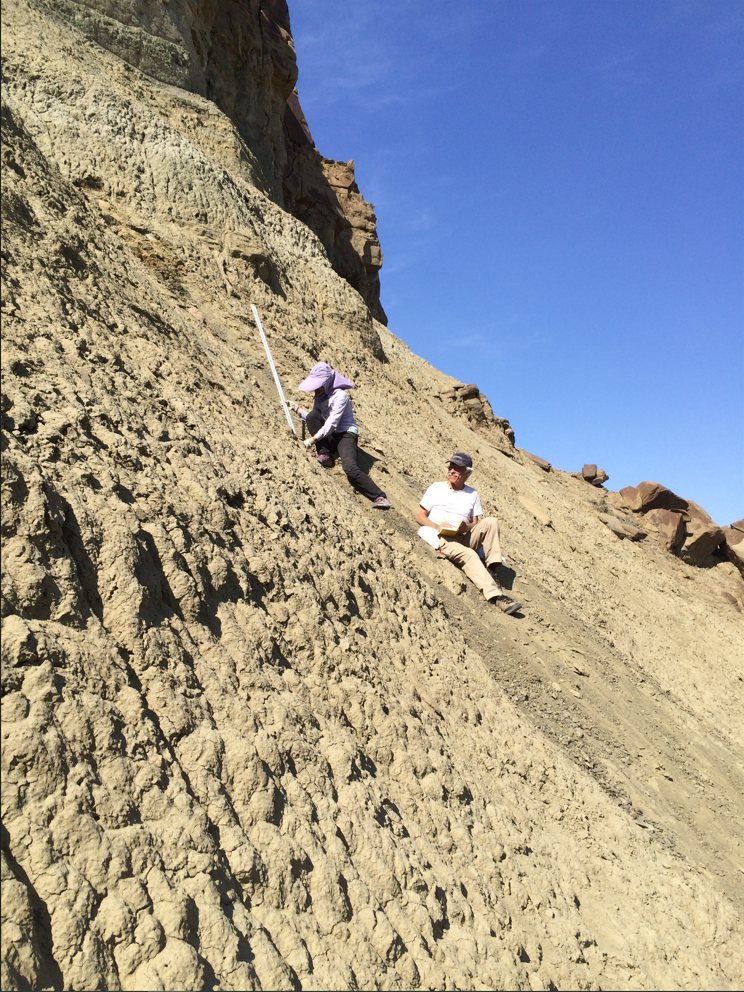
Fieldwork photo of Yanan Fang and Paul Olsen in the Sangonghe Formation at the Haojiagou section in the Junggar Basin
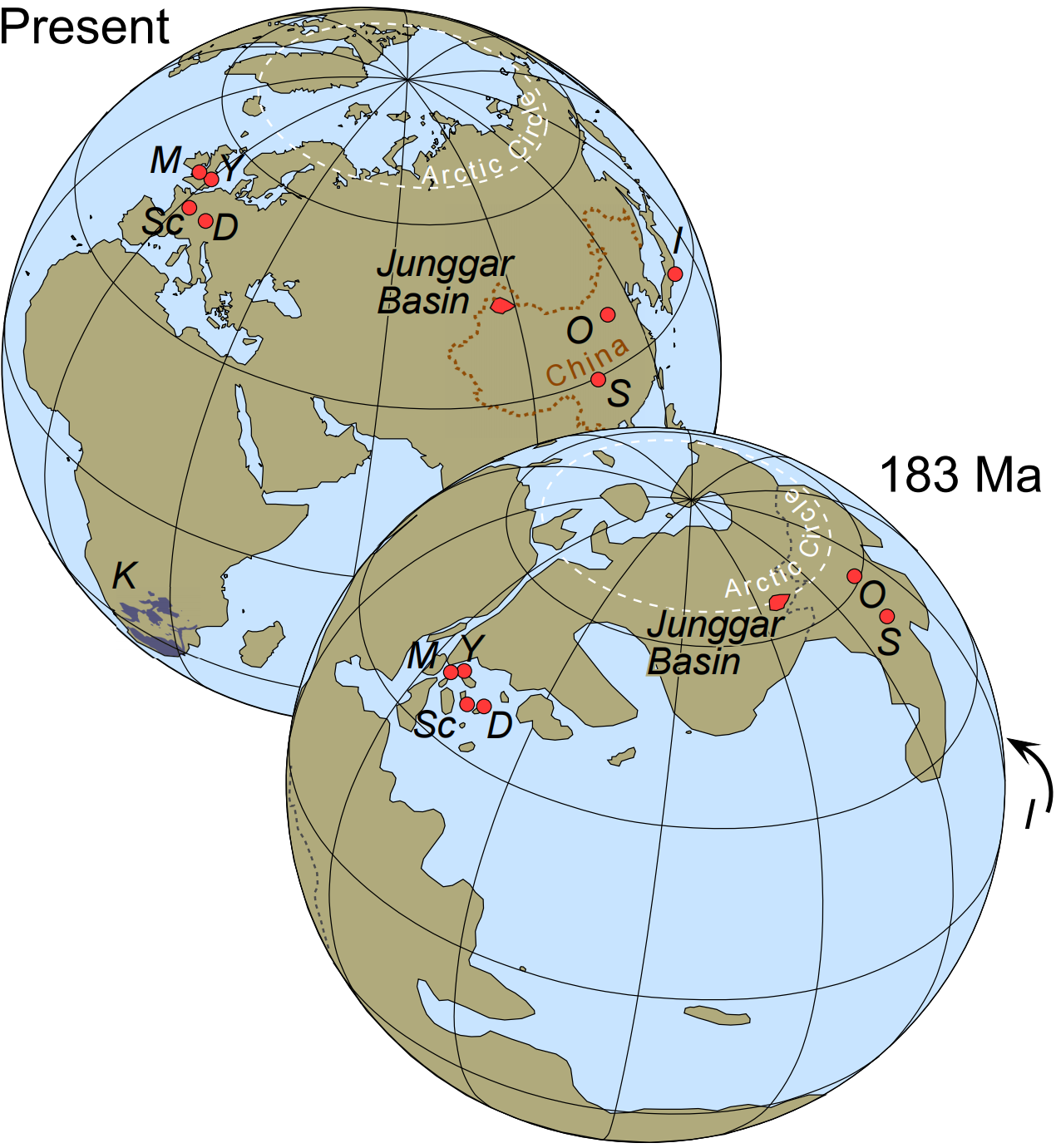
Location map of the present-day and Early Jurassic Junggar Basin
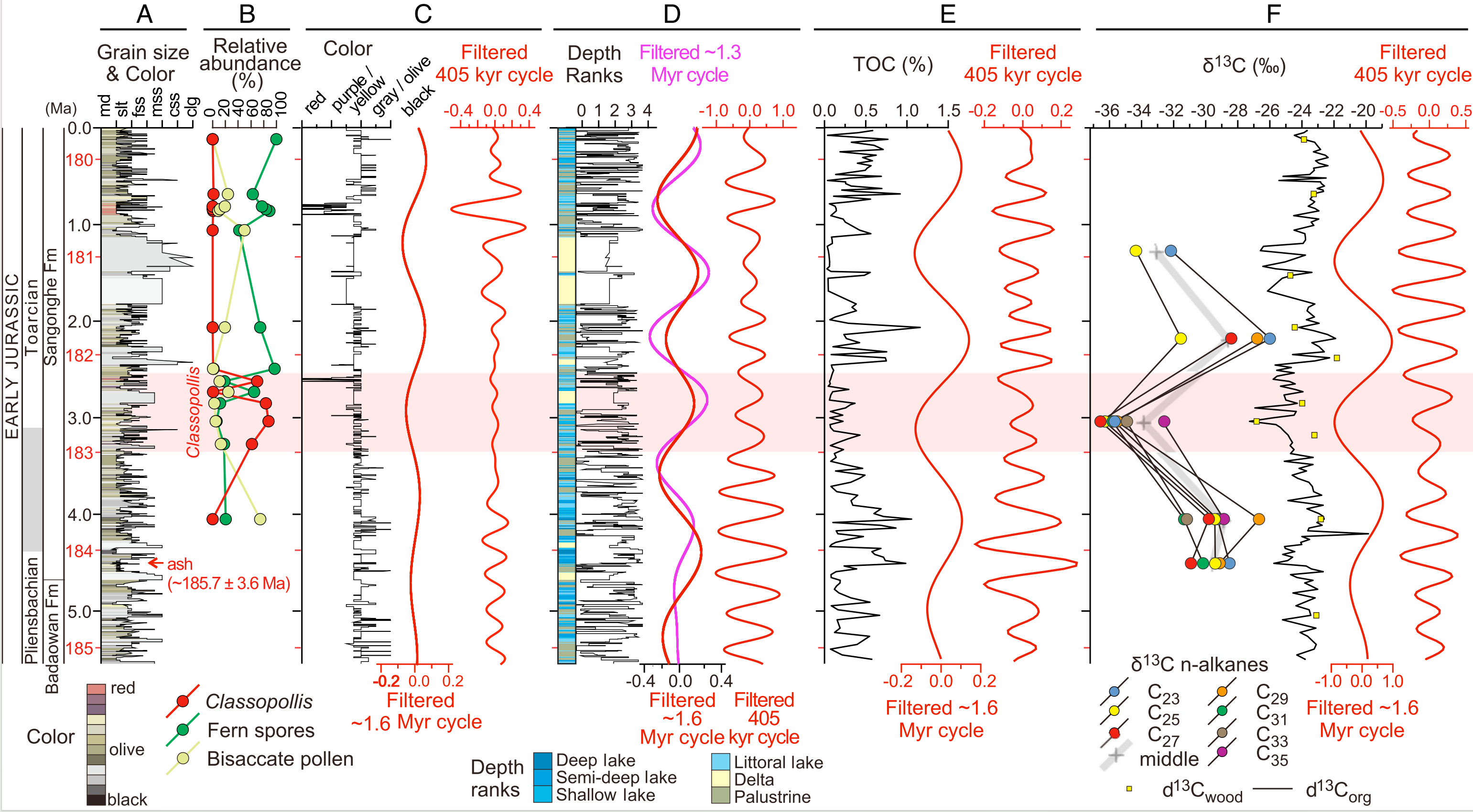
Lithologic column of the Sangonghe Formation tuned to the 400-kyr eccentricity cycle (A), relative spore-pollen abundance (B), color (C), sedimentary facies and relative lake-level curve (D), total organic carbon (TOC) content (E), organic carbon isotope (F), and corresponding 1.6-Myr Mars-Earth super-long eccentricity and 400-kyr Jupiter-Venus eccentricity filtering
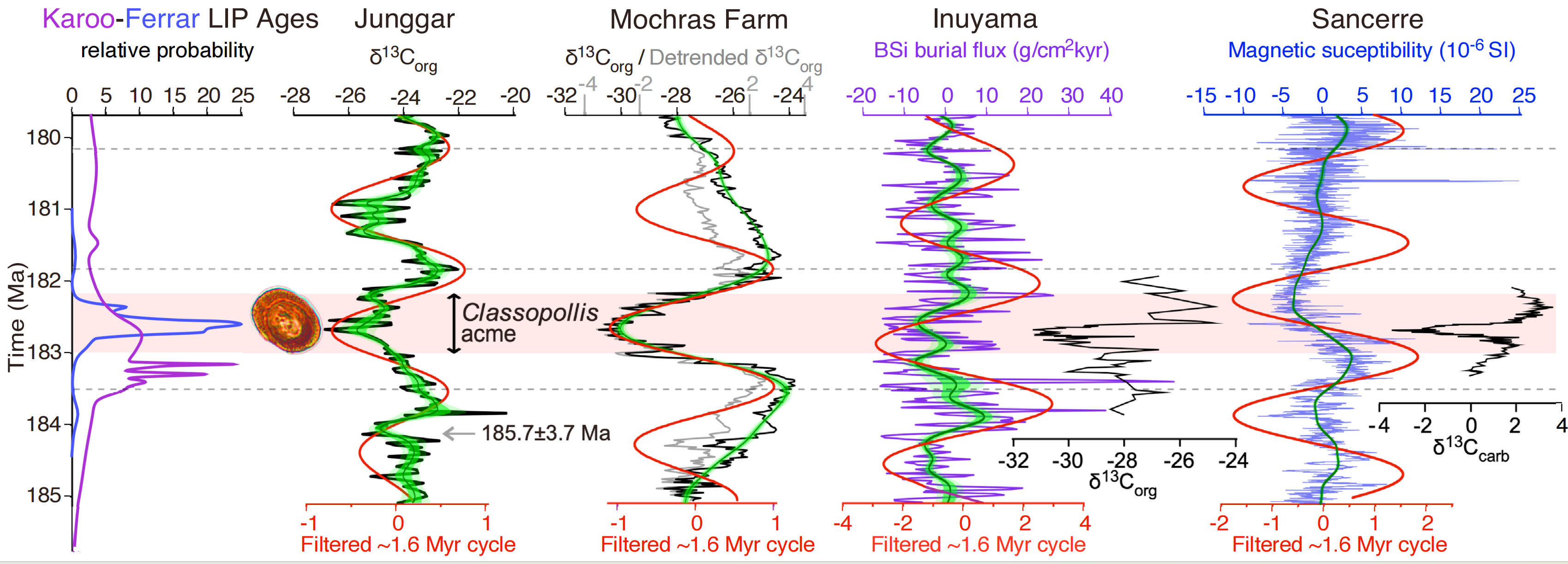
Age distribution of the Karoo-Ferrar Large Igneous Province correlated with organic carbon isotopes from the Junggar Basin tuned to the 400-kyr eccentricity cycle, organic carbon isotopes from Mochras Farm (UK), biogenic silica flux from Inuyama (Japan), and magnetic susceptibility from Sancerre (France). All sections are aligned at the most negative T-OAE carbon isotope point, with the time scale derived from the Inuyama astronomical age model.
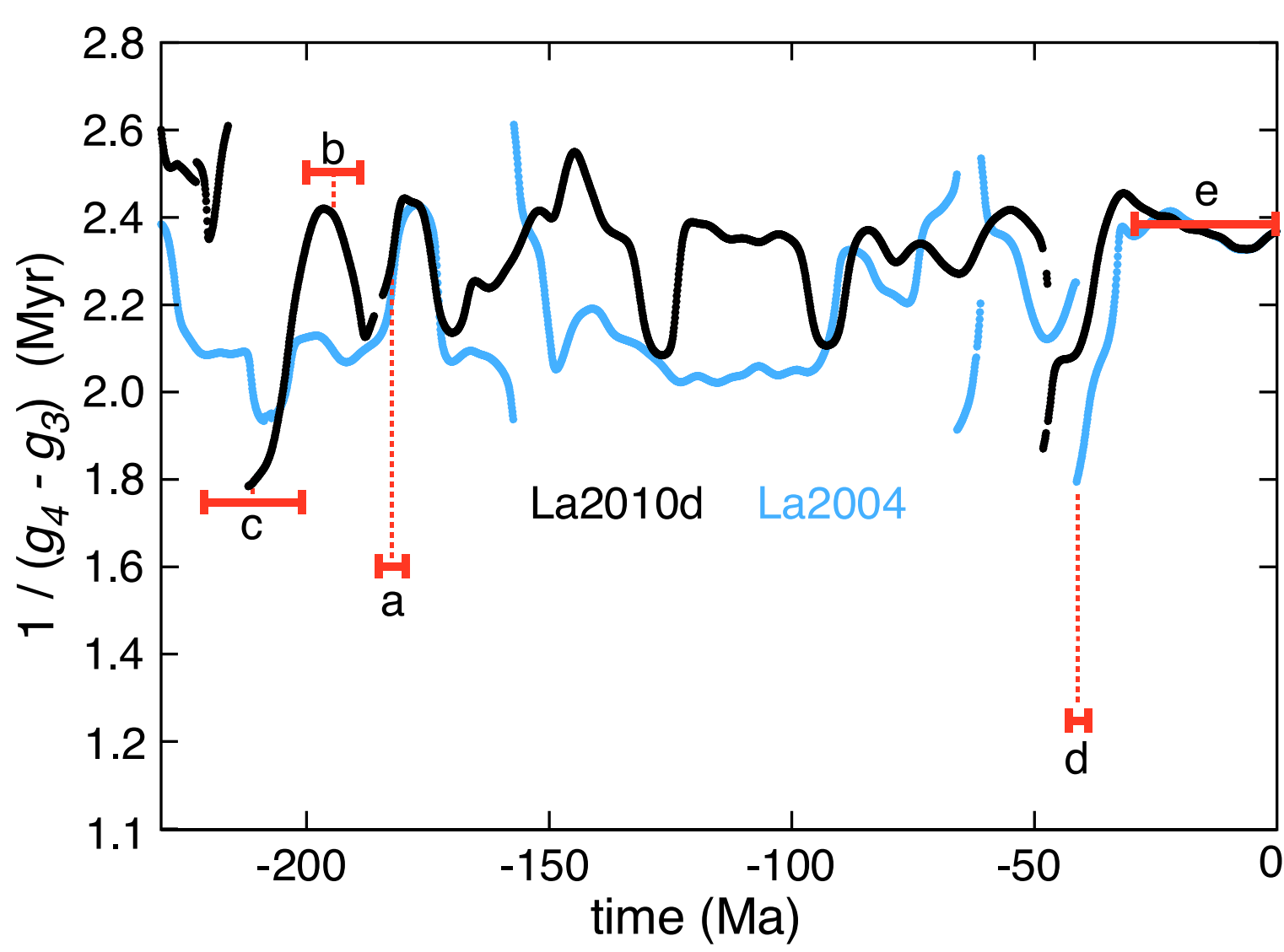
Comparison of Mars-Earth super-long eccentricity cycles in astronomical solutions with geological records.
Download:
